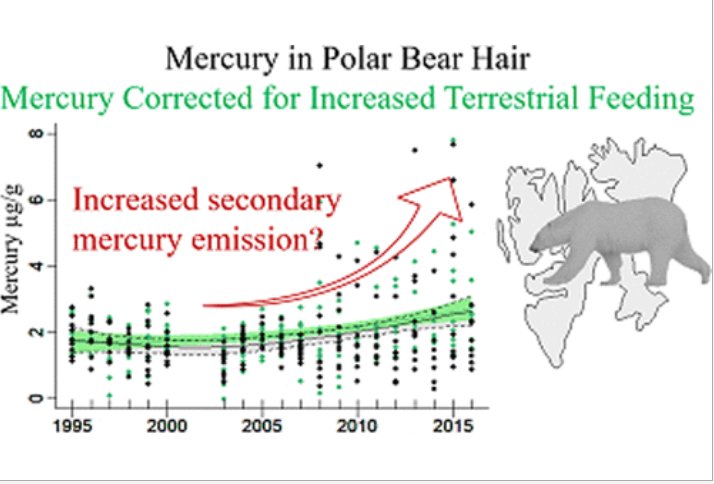Two Decades of Mercury Concentrations in Barents Sea Polar Bears (Ursus maritimus) in Relation to Dietary Carbon, Sulfur, and Nitrogen
New publication by Anna Lippold, Jon Aars, Magnus Andersen, Aurore Aubail, Andrew E. Derocher, Rune Dietz, Igor Eulaers, Christian Sonne, Jeffrey M. Welker, Øystein Wiig, and Heli Routti

Abstract:
Temporal trends of total mercury (THg) were examined in female polar bear (Ursus maritimus) hair (n = 199) from the Barents Sea in 1995–2016. In addition, hair values of stable isotopes (n = 190–197) of carbon (δ13C), sulfur (δ34S), and nitrogen (δ15N) and information on breeding status, body condition, and age were obtained. Stable isotope values of carbon and sulfur reflect dietary source (e.g., marine vs terrestrial) and the nitrogen trophic level. Values for δ13C and δ34S declined by −1.62 and −1.18‰ over the time of the study period, respectively, while values for δ15N showed no trend. Total Hg concentrations were positively related to both δ13C and δ34S. Yearly median THg concentrations ranged from 1.61 to 2.75 μg/g and increased nonlinearly by 0.86 μg/g in total over the study. Correcting THg concentrations for stable isotope values of carbon and sulfur and additionally breeding status and age slightly accelerated the increase in THg concentrations; however, confidence intervals of the raw THg trend and the corrected THg trend had substantial overlap. The rise in THg concentrations in the polar bear food web was possibly related to climate-related re-emissions of previously stored Hg from thawing sea-ice, glaciers, and permafrost.
